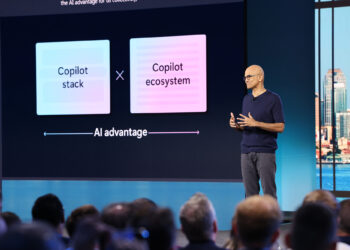I’s time to become AI Native, and quickly.
For the last year or so, I kept meaning to write something about AI as it’s something I talk about pretty much every day. But 1) I didn’t want to just ride the hype and add little to the discussion without observing its adoption on the ground; and 2) I am not the most technically gifted and therefore not the best person to talk about the intricate details of the latest technical releases.
However, having acquired real-life experience and spoken to hundreds of people (literally!) about the topic, since the launch of our GenAI practice, I thought I’d share some reflections from a business perspective, without going into too many technical details.
For the purposes of this article, I will be using “AI” as the generic term for generative AI as well as other types of more established AI domains, such as Machine Learning for example. I will focus primarily on what I call “enterprise” use cases, as opposed to the consumer-led initiatives (such as asking Gemini or ChaGTP to answer questions, write emails etc). I will also talk about what we’re doing at Ancoris, so there is a component of self promotion here! But I guess that’s part of my job.
Ok, onto the topic
So, was it all just hype? If you think the recent AI excitement will be just another technological era such as virtualisation or cloud, and you have time to see what happens, let others fail, and then slowly embed it into your business, then I’m afraid you’re wrong. Or, at least, not applying what I believe to be a winning strategy.
At Ancoris, we keep banging on about this concept of becoming AI Native*. In the same way Cloud Native became a reality for lots of organisations. This is where you’d embed cloud across your business, whether by migrating infrastructure, using it to build new products, or implementing SaaS products instead of hosted software. This brought more agility, flexibility, cost savings, security, etc as we all know.
To become AI Native you will need to do exactly the same, and look to embed AI across every process in your business. And use it for anything new you create, applying the “can AI do this?” question to everything you develop or want to improve.
But the similarities stop there. With cloud computing, it turned out that people had almost a 10-year runway to become cloud-native (although the earliest adopters became the winners – Netflix, Airbnb etc). With AI, the runway will be much shorter, and whoever adapts the fastest will have an instant advantage. More on that below, but this should be good news for most businesses.
How to approach it, then?
I don’t particularly like to provide simple answers to complex problems, as complexity requires thought and compromise. So I’m aware that what I’m going to say next risks oversimplifying the challenges. But hopefully it provides clarity on the sentiment.
There will be lots of things to consider but in my view, organisations (and this firmly includes the public sector) broadly have two tracks, which they can follow in parallel if they choose to.
On the one hand, you have productivity gains, by revolutionising or augmenting existing processes – i.e. doing similar things but better, faster, cheaper.
On the other, there is the opening up of new market opportunities, by developing new products and offerings or even AI being the product itself.
The latter is usually described as the typical high-risk, high-reward initiative, which is absolutely true. It will take larger amounts of investment, time and risk appetite, given the still relatively nascent nature of the technology. This seems pretty obvious. It is where the long-term gains will come from and organisations should be looking at this very seriously and deciding what big bets they want to take. It also relates to possible existential threats to businesses, where in the extreme AI could deem their entire business model irrelevant.
However I’d also like to focus on the productivity gains side of this question. Although in the long term this will become less of a differentiator, the first movers will see huge benefits straight away. Also, I’d risk saying that it’s probably one of the very few areas where you can make low-risk, high-reward investments. And, most importantly, you can free up those resources (financial or otherwise) needed for your big bets. So they are not mutually exclusive in that sense.
I’m sold, give me some examples
Here’s the self promotion bit. At Ancoris we are currently helping customers prove they can reduce 40%-80% of time to create and use technical documentation in the automotive sector, bring down time-consuming contractual risk analysis in financial services, and enable local authorities to resolve issues quicker for their citizens and visitors.
We are also working on enabling +60% reduction of precious police time on manual fraud detection tasks, so they can spend more time on fighting crime. We’re also helping other organisations save time and speed up processes by bringing all their internal information into one place, enabling them to raise queries and internal tickets, rather than spending long countless hours looking through documents to find the answers or the people they need to contact.
And the list goes on.
In summary
You need to get on with it. Find the low-risk, high-reward use cases right now and start defining your big bets.
Notes:
*I think we were the first ones in our space to coin that phrase – emphasis on “I think” so I’m not sued by anyone who may have used it before and I’m not aware!
Also, in the unlikely scenario you made it till the end – this post has not been written using AI. You may have noticed the poor quality in comparison to what it could create! On a serious note, this is an area where AI is not helpful, not because it’s not very clever, but because it’s like asking someone else (human or AI) to think for you.















